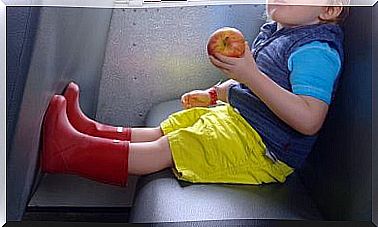Effects Of The Regulatory Agreement For Children’s Visits

When a married couple with children divorces on good terms, there is a possibility of agreeing on the best solution. In these cases, the visitation and maintenance regulation agreement is used. This document establishes the coexistence between the parent who does not maintain custody and the child in common.
In the event of no agreement to establish the visitation regulatory agreement, it will be determined by the judicial authority. Always taking into account the suggestions of the juvenile prosecutors; the interest of the minor is always the most important thing in these cases.
Added to this, today there are other forms of coexistence. For example, some separated parents prefer the figure of joint custody. But in other cases this system is not advisable. Next, we will explore the effects of the visitation regulatory agreement.
The visiting regime and its two figures
The visitation regime establishes the way in which a non-custodial parent and their child live together. In this sense, the agreement represents a right for both the child and the parent. In Spain, it is also understood as a parental responsibility.

There are two ways to establish such a regime. The first is the visitation, under which the parent can be with the minor in the house of the custodial party. In these cases, one to two weekly visits are usually established. However, when working by mutual agreement, this figure is not usually used.
In reality, the figure that is most chosen in the regulatory agreements is that of the stay. The non-custodial parent looks for the minor and spends a pre-established time with him, with the right to spend the night. Usually the child spends one weekend at home and another with the parent.
The visiting regulatory agreement
When we speak of regulatory covenants, we necessarily go back to consensual divorces. In them the parents have the ability to agree on all aspects of the divorce through negotiation. This is, without a doubt, the best way to act, because it is the least conflictive method.
With the divorce by mutual agreement, the parties usually agree on regimes based on the interest of the minor. In this scenario, it is not necessary to make a demand, because parents sit down to talk and generate a consensus.
For this type of agreement to occur, both parties must be able to negotiate without conflict. In the end, the regulatory agreement is reviewed by a judge based on compliance with the legal regime. There, not only the coexistence regime is stipulated, but also the maintenance, division of assets, etc.
Aspects agreed upon in the coexistence regime
In addition to the weekend, non-custodial parents could get a weekday for a visitation or outing. The coexistence regime also includes other scenarios:
- Holiday dates: parents divide the most important holidays to spend with the minor. For example, they often alternate on Christmas Day and New Year’s Day. Kings days and birthdays can also be specified in said agreement. The same goes for Easter.
- School holidays: in general, these are divided into periods of time of fifteen days. They can also be divided into two large periods, so that the child is with both parents. Everything will also depend on the distance between the parents’ homes.

In regulatory agreements, periods called bridges can even be defined. This is when a holiday falls on a Friday, granting more continuous rest days. The important thing is that everything is defined to avoid uncomfortable situations later.
The great advantage of the regulatory agreement: it is cheaper
Negotiating is better than falling into conflict, and not just because of the stress of being in court. In fact, negotiating a divorce can lower your costs. Complaints generate more fees; regulatory agreements no. Agreements between parties agree for many reasons, and economics is one of them.
In addition, negotiating it will be much easier to think about what is really flattering for the child. If the conditions are lent, joint custody can also be established. Unless there are problems of abuse or irreconcilable differences, a visiting agreement will always be the best option.










